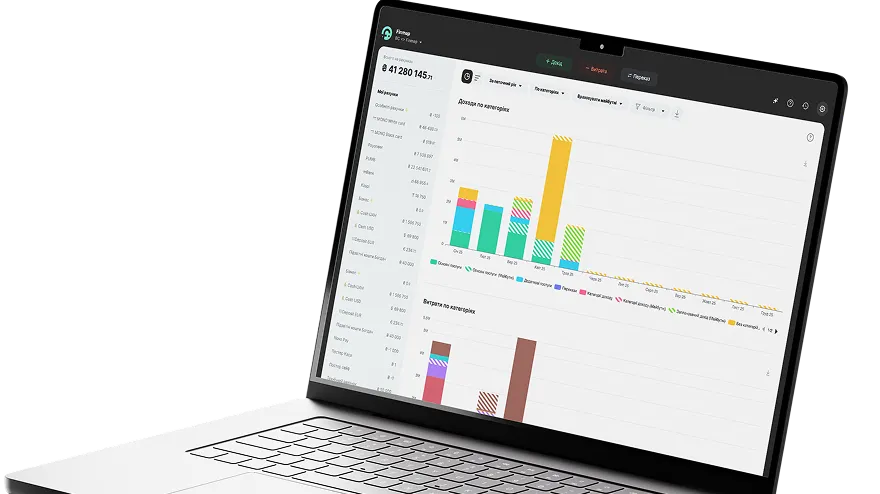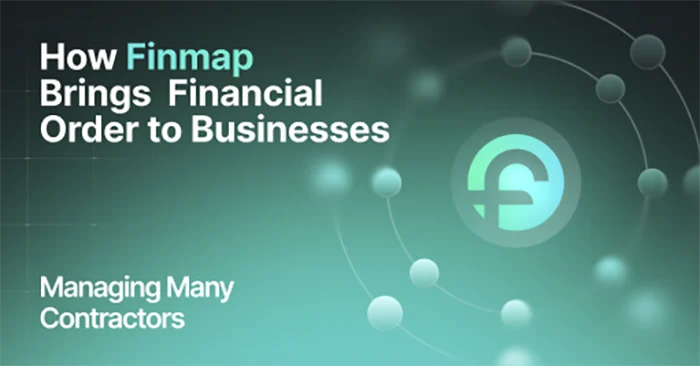Zero on the Account and $175,000 in the Red: 7 Insights to Avoid Bankruptcy
When your business operates in three countries, completes 1,500 shipments every month, has a team of 70 people, and simultaneously launches an AI-powered EdTech product — it seems like success and everything under control. Until suddenly, the account balance hits zero, there's a cash gap in the company, and you have no idea where the money went.
We had turnover, active sales, new contracts. But one day I opened the account and saw: there was no money. And this while the business was running at full capacity. — Oleksandr Stupakivskyi, entrepreneur, guest on the podcast ‘Wish I’d Known This Earlier’
Oleksandr is the co-founder of a logistics company operating in the markets of Ukraine, the USA, and Europe. His business was growing dynamically: thousands of shipments every month, team expansion, entry into new markets.
But alongside the growth came a cash gap, $175,000 lost due to an unsuccessful partnership, and constant stress from not understanding the business's finances.
In this article, Oleksandr shares insights and lessons he learned firsthand:
- how a single cash gap can put a large-scale business on pause,
- why the feeling of “we're doing fine” doesn't work without numbers,
- how financial management with Finmap helped systematize operations and reveal the actual situation,
- and why partnerships are a zone of increased financial turbulence.
This isn't a finance textbook. It's an honest story with mistakes, failures, and real tools that help you avoid losing control of your business when everything seems fine.
Read on if you're also ready to look at your business without illusions.
Insight 1. Even a Large-Scale Business Can Operate in the Red
Growing revenue ≠ more profit. This realization comes painfully. It was exactly this insight that led Oleksandr to face a cash gap during a period of active growth.
We were growing very fast. But because of that, we started to sink. We simply didn’t have time to understand what was really happening with the money. — Oleksandr Stupakivskyi, entrepreneur
What happened:
More shipments meant more expenses for prepayments, fuel, salaries, and administrative costs. Meanwhile, client payments often came with delays. This created a financial chasm.
A cash gap is the most dangerous financial trap for small and medium-sized businesses. It means that your current expenses aren’t covered by incoming payments. And if you don’t control this process, you risk going into debt, losing partners, or even shutting down the business.
Why is it important to track potential cash gaps daily?
Many entrepreneurs manage finances “after the fact” — looking at reports, balances, and profits at the end of the month or quarter. But financial control must be preventive, not reactive.
- Real-time financial management helps predict when the money will run out and make urgent decisions.
- Cash flow forecasting allows you to prepare for seasonal fluctuations or payment delays.
- Financial reserves are your safety net against cash gaps and unforeseen expenses.
When we first encountered a cash gap, it was a shock. We couldn’t understand how, with such sales volumes, there was no money. Now we know — without systematic financial management, a business is doomed to chaos. — Oleksandr Stupakivskyi, entrepreneur
How to Prevent a Cash Gap — Key Actions
Read more on how to avoid cash gaps and prevent bankruptcy.
Before using Finmap, Oleksandr’s company:
- had no clear understanding of the balance between income and expenses,
- didn’t track accounts receivable,
- didn’t build a cash flow forecast.
After implementing financial management:
- there was a clear picture of expenses and profits for each business direction,
- it became obvious which projects were draining money and which were generating it,
- the financial plan made it possible to anticipate a cash gap and prepare a cushion.
Remember: a cash gap is not just a temporary problem but a signal to change your business’s financial strategy. If you ignore it, you risk losing everything you’ve built.
Insight 2. A Partnership Without a Contract — A Costly Mistake
A successful business in one country often creates the illusion that everything will follow the same scenario in another. But when it comes to partnerships, intuition is a poor advisor if it’s not backed by clear agreements on paper.
I had a positive experience with a partner in Ukraine and thought it would be the same in the US. But it cost me $175,000 and a year of lost time. — Oleksandr Stupakivskyi, entrepreneur.
When launching a business in the US, Oleksandr chose a partnership model without a clear contract, defined roles, or financial guarantees. The result — mismatched expectations, damaged relationships, lost time, reputational risks, and major financial losses.
Why is a partnership without a contract risky?
Many entrepreneurs neglect legal formalization at the start: saying things like “we’re friends,” “we’ll figure it out as we go,” or “we don’t want legal hassle.”
But business without a clear contract leads to:
- No clarity on who is responsible for key areas (finance, team, marketing).
- No conflict resolution mechanism.
- No record of investment contributions or ownership shares.
- No understanding of what happens if one partner exits.
All of this lays the groundwork for financial losses, legal disputes, and toxic relationships.
What should be documented in a partnership agreement?
How to Protect Yourself and Your Business in a Partnership
- Document everything from the start. Don’t avoid difficult conversations. An agreement without written confirmation is just an illusion.
- Involve lawyers. Even if it’s a shoestring startup — a written contract = peace of mind.
- Agree on exit mechanisms. Because every partnership either works or ends.
- Maintain separate financial management for each partnership-based business. So you can see the real numbers and react in time.
After that failed experience, I never take a single step without a clear contract. Even if everything starts with a handshake — it ends on paper. — Oleksandr Stupakivskyi, entrepreneur
Partnership is not just a shared dream. It’s legal, financial, and reputational responsibility. And if you don’t agree on terms upfront, you risk losing much more than money.
Insight 3. Money in the Account ≠ Profit
Many entrepreneurs fall into the trap: they see money in the account and think the company is profitable. But having funds doesn’t mean it’s your income. Often, it’s someone else’s money, reserves for obligations, or simply an illusion of financial stability.
I thought we were in the black because there was something in the account. But in reality, half of that money wasn’t ours. — Oleksandr Stupakivskyi, entrepreneur
Even an experienced entrepreneur can end up in a situation where the money in the account isn’t enough to cover taxes or pay salaries. You need to clearly plan what each amount is for — so you don’t discover that the same funds are expected to cover different needs.
Why the account balance is not an indicator of financial health
Oleksandr went through this firsthand. Only after implementing Finmap did he see the full picture: actual balances, upcoming expenses, who was delaying payments, and — most importantly — how much of the money in the account actually belonged to the business.
Here’s what you DON’T see without financial management:
- The total accounts receivable — who owes you and how much.
- Future mandatory expenses — taxes, rent, salaries.
- Reserved payouts — amounts already promised but not yet debited.
- Real cash flow — how much money is actually free to use right now.
How to Tell the Difference Between an Account "Plus" and Real Profit
What Oleksandr Did — and What You Can Do Too:
- Moved from “gut feeling” to numbers — implemented daily monitoring of actual and planned balances.
- Tracks overdue payments — so accounts receivable don’t pile up.
- Started setting aside reserves for taxes and mandatory expenses as soon as money comes in.
- Analyzes cash flow and project profitability weekly — instead of just looking at the bank account.
Financial management finally helped me see how much of ‘my’ money is actually mine. And that transparency changed not just the numbers, but also the way I manage the company. — Oleksandr Stupakivskyi, entrepreneur
Having money is no guarantee of profitability. Profit is what remains after all obligations are covered. And if you’re still making financial decisions based on “gut feeling” — it’s time to switch to numbers.
Insight 4. If You Don’t See the P&L — You’re Not Running the Business
Many entrepreneurs rely only on the account balance at the end of the month or the number of sales. But that doesn’t show business profitability at all. Without a clear understanding of what generates profit and what “eats up” resources, you can’t make effective management decisions.
We used to look only at the result — what was left in the account. Now we see what we actually earned and what we spent. — Oleksandr Stupakivskyi, entrepreneur
The key report that gives you this picture is the P&L (Profit and Loss), or income statement. It’s not a formality — it’s your main navigator in financial management.
Before implementing financial management in Oleksandr’s company:
- There was no separation of expenses by direction and project.
- EdTech, logistics, and trading expenses were all counted together.
- No one knew which area was dragging the business down and which one was profitable.
- Decisions were made based on intuition, not data.
After implementing Finmap:
- A clear P&L report for each business line appeared.
- It became clear that trading was profitable, while EdTech was still only generating expenses.
- The team was able to reallocate resources, optimize spending and marketing.
- There was now an opportunity to scale what’s effective — instead of sustaining what’s unprofitable.
What a P&L Report Gives Your Business — In Simple Terms
The P&L showed me something I hadn’t seen before: we were spending resources on a direction that wasn’t generating income. And once that became obvious — the dilemma of where to go next disappeared. — Oleksandr Stupakivskyi, entrepreneur
How to Implement P&L in Your Business:
- Create a financial system — separate income and expenses by direction.
- Define key expense categories and break them down into subcategories.
- Choose a convenient tool (Finmap, Google Sheets, ERP).
- Analyze your P&L monthly — it’s your main tool as a business leader.
As long as you don’t see the P&L, you’re not managing — you’re guessing. Once the numbers are clear, clarity, logic, and calm emerge in your financial decisions.
Insight 5. Finance Is Not About Reports. It’s About Strategy
Most entrepreneurs start with passion, a product, and the desire to change the world. Then — they hire people, invest in marketing, launch new directions without a clear answer to the question, “can we afford this?”
Before, we were just working. Now — we’re managing. Finance has become our coordinate system. — Oleksandr Stupakivskyi, entrepreneur
Finance isn’t about bookkeeping and end-of-month calculations. It’s about making management decisions that affect your business’s growth, profitability, and resilience.
What Strategic Questions Does Financial Management Help Answer
What Changed in Oleksandr’s Company After Implementing Systematic Financial Management:
- Weekly financial meetings were introduced — the whole team sees real numbers and takes part in decision-making.
- Development scenarios are created: realistic, optimistic, and pessimistic.
- It's now clear where spending doesn’t bring results — in marketing, EdTech, and certain projects.
- The company stays ahead of crises instead of reacting to them after the fact.
Before, decisions were made based on gut feeling — now, based on models. This saves not only money, but nerves as well. — Oleksandr Stupakivskyi, entrepreneur
Financial management isn’t just files for the accountant. It’s your strategic weapon that:
- unlocks new opportunities for scaling,
- reveals weak spots in the business model,
- allows you to build anti-crisis scenarios before something goes wrong.
If you want to grow — first understand where you stand. And that’s only possible through finance.
Insight 6. Don’t Ignore Financial Signals
I saw something wasn’t right. But I didn’t want to dive into the numbers. Now I regret it. — Oleksandr Stupakivskyi, entrepreneur
Every business goes through tough times. But financial problems don’t come out of nowhere. They build up gradually — and always give signals. Most entrepreneurs just ignore them.
An entrepreneur keeps working at full speed, ignoring the first cracks — until it all collapses. And it’s financial management that allows you to spot the warning signs before it’s too late.
Typical Signals That a Business Is Losing Financial Stability
Finmap became an early warning system for Oleksandr’s team. Instead of gut feeling — daily analytics. Instead of hope — concrete numbers.
What changed after launching financial control:
- Gained understanding of actual cash flow — when the dips and peaks will occur.
- Became clear which clients were causing cash gaps.
- Alerts and reports were implemented: weekly analysis of receivables, expenses, and financial results.
- The team started responding to problems before they became critical.
The numbers started working for us. Now we’re not putting out fires — we’re managing the situation in advance. — Oleksandr Stupakivskyi, entrepreneur
Ignoring financial signals is like ignoring pain in the body. It doesn’t go away — it turns into a crisis.
Insight 7. A Financial Expert Is Not a “Luxury,” but a Strategic Asset That Saves Thousands
Many entrepreneurs postpone hiring a financial expert, thinking: “I’ll figure it out myself” or “It’s too expensive.” But in reality — delay costs much more. It’s the financial expert who helps uncover where the business is losing money every single day.
After working with a financial expert from Finmap, Oleksandr doesn’t just keep records — he manages the business.
What a Financial Expert Does in a Modern Business — Not Excel, but Strategy
Outsourced CFO + Finmap = the ideal formula for effective financial management
How Oleksandr’s Work Changed After Bringing in a Financial Expert:
- A clear financial model was built for all business areas.
- Regular reports became available to both the owner and the team.
- Every decision is now based on numbers, not intuition.
- The business strategy is no longer chaos — it’s a calculated plan.
The financial expert gave me peace of mind. Now I know what’s happening with the money — and what to do next. — Oleksandr Stupakivskyi, entrepreneur
A financial expert isn’t just “about numbers.” It’s about control, clarity, and profitability. If you want to scale, optimize expenses, or enter a new market — having a financial expert on your team will shorten the path by months and save tens of thousands.
Finance Isn’t Scary. What’s Scary Is Not Understanding It
Oleksandr went through a cash gap, lost $175,000, experienced financial chaos — and came out stronger.
Now, finance is his main management tool — not a terrifying unknown.
Bonus: Checklist “Where to Start with Financial Management”
- Count all expenses and income for at least the past 3 months.
- Look at balances with planned expenses in mind.
- Create a P&L — Profit and Loss report.
- Identify the least profitable direction.
- Start financial management in Finmap.
- If you don’t have time to do it yourself — bring in a financial expert.
Don’t wait for a cash gap to start managing your finances
Try Finmap for your business — and take control of your money today.
Frequently Asked Questions
1. What is a cash gap and why is it dangerous for business?
A cash gap is a situation where current business expenses exceed incoming cash flow. This results in not having enough money to cover salaries, payments to suppliers, and other operating costs. If not controlled, the business risks accumulating debt, losing partners, or even shutting down.
2. Why shouldn’t you rely only on the bank account balance?
Money in the account isn’t always the company’s actual profit. Some of the funds may be reserved for taxes, salaries, or debts. That’s why it’s important to maintain financial management and regularly analyze financial reports.
3. How can a partnership without a written agreement affect the business?
Lack of a clear contract leads to misunderstanding of roles, financial responsibilities, and conflict resolution mechanisms. This can result in financial losses, damaged relationships, and even legal disputes. A written agreement protects the business and helps avoid misunderstandings.
4. Why is it important to maintain financial management and have a P&L report?
The Profit and Loss (P&L) report gives a clear picture of which areas of the business generate profit and which generate losses. It enables informed decisions about investments, cost optimization, and scaling — rather than relying solely on intuition or the bank balance.
5. When should you bring a financial expert onto your team?
You should bring in a financial expert at the scaling stage or when launching new products. They help build a transparent financial model, forecast cash flow, control expenses, and improve business efficiency. Timely involvement of a financial expert helps avoid financial losses and chaos.




.webp)



.webp)
